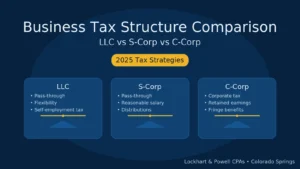If you're a business owner looking to reduce your tax liability while investing in essential equipment, the Section 179 deduction might be your most powerful tool. This often-overlooked tax provision allows businesses to deduct the full purchase price of qualifying equipment and software purchased or financed during the tax year, rather than depreciating it over several years.
What is Section 179 Deduction?
Section 179 of the IRS tax code enables businesses to deduct the full purchase price of qualifying equipment and/or software purchased or financed during the tax year. That means if you buy a piece of qualifying equipment, you can deduct the FULL PURCHASE PRICE from your gross income.
This substantial tax deduction was designed to encourage businesses to invest in themselves and stimulate economic growth. For 2024, the deduction limit has been set at $1,160,000, with a spending cap of $2,890,000.
Important 2024 Update
The Section 179 deduction limits are adjusted annually for inflation. Always verify current limits with your CPA before making major equipment purchases.
How Does Section 179 Work?
Instead of depreciating equipment over 5-7 years using standard depreciation schedules, Section 179 allows you to write off the entire cost in the year of purchase. Here's a practical example:
Standard Depreciation
$100,000 equipment depreciated over 5 years = $20,000/year deduction
Section 179
$100,000 equipment = $100,000 deduction in Year 1
Tax Savings
At 35% tax rate = $35,000 saved in Year 1 vs. $7,000 with standard depreciation
Qualifying Property for Section 179
Not all business purchases qualify for Section 179. The IRS has specific guidelines about what constitutes eligible property:
Equipment That Qualifies
Tangible Property
- Machinery and equipment
- Computers and servers
- Office furniture
- Vehicles (with limitations)
- Manufacturing equipment
Intangible Property
- Off-the-shelf software
- Qualified improvement property
- Certain building improvements
- Security systems
- HVAC systems
Property That Does NOT Qualify
- Land and buildings (except qualified improvement property)
- Property used outside the United States
- Property used for lodging
- Air conditioning or heating units
- Property acquired from related parties
Section 179 Limits and Phase-Out
While Section 179 offers substantial benefits, there are important limits to understand:
| Limit Type | 2024 Amount | Description |
|---|---|---|
| Deduction Limit | $1,160,000 | Maximum Section 179 deduction for the year |
| Spending Cap | $2,890,000 | Phase-out begins when purchases exceed this amount |
| Business Income Limit | 100% of income | Cannot exceed total business taxable income |
| SUV Limit | $28,900 | Special limit for certain vehicles |
Need Help Maximizing Your Section 179 Deduction?
Our experienced CPAs can help you develop a strategic equipment purchase plan that maximizes your tax savings while meeting your business needs.
Schedule a Tax Planning SessionStrategic Planning Tips
To maximize the benefits of Section 179, consider these strategic planning approaches:
1. Time Your Purchases Wisely
Since Section 179 is a "use it or lose it" deduction, timing is crucial. Consider your current year's income and tax situation when planning major equipment purchases. If you expect higher income this year, it might be beneficial to accelerate planned purchases.
2. Combine with Bonus Depreciation
For 2024, businesses can still claim 60% bonus depreciation on qualifying property. This can be combined with Section 179 for maximum tax benefits. Here's how they work together:
- Apply Section 179 up to the limit
- Apply bonus depreciation to the remaining cost
- Regular depreciation applies to any remaining balance
3. Consider Financing Options
Section 179 applies to both purchased and financed equipment. This means you can claim the full deduction even if you finance the purchase, potentially creating a positive cash flow situation where your tax savings exceed your annual payments.
4. Document Everything
Maintain thorough records of all qualifying purchases, including:
- Purchase invoices and receipts
- Proof of business use percentage
- Placed-in-service dates
- Description of how equipment is used in your business
Common Section 179 Mistakes to Avoid
Even with the best intentions, businesses often make costly mistakes with Section 179. Here are the most common pitfalls:
Mistake #1: Not Considering State Conformity
Not all states conform to federal Section 179 rules. Some states have different limits or don't allow the deduction at all. Always check your state's specific rules.
Other Common Mistakes:
- Exceeding income limits: The deduction cannot create a loss for your business
- Missing the placed-in-service deadline: Equipment must be purchased AND placed in service by December 31
- Incorrect business use percentage: Equipment must be used more than 50% for business
- Forgetting about recapture: If business use drops below 50%, you may need to recapture previous deductions
Section 179 vs. Bonus Depreciation
Understanding the differences between Section 179 and bonus depreciation is crucial for tax planning:
| Feature | Section 179 | Bonus Depreciation |
|---|---|---|
| 2024 Deduction | 100% up to $1,160,000 | 60% of purchase price |
| Income Limitation | Limited to business income | Can create a loss |
| Used Property | Yes, if new to you | Yes, with restrictions |
| Spending Cap | Phase-out at $2,890,000 | No limit |
Industry-Specific Applications
Different industries can leverage Section 179 in unique ways:
Construction Companies
- Heavy machinery and equipment
- Specialized tools
- Work vehicles and trucks
- Safety equipment
Medical Practices
- Diagnostic equipment
- Examination tables and chairs
- Computer systems and software
- Office improvements
Restaurants
- Kitchen equipment
- POS systems
- Furniture and fixtures
- Refrigeration units
Planning for 2025 and Beyond
While Section 179 limits are adjusted annually for inflation, bonus depreciation is scheduled to decrease:
- 2025: 40% bonus depreciation
- 2026: 20% bonus depreciation
- 2027: 0% bonus depreciation (unless extended)
This makes Section 179 increasingly important for tax planning in future years.
Ready to Maximize Your Tax Deductions?
Don't leave money on the table. Let our experienced CPAs help you develop a comprehensive tax strategy that includes Section 179 and other valuable deductions.
Call (719) 387-9745 for Immediate AssistanceFrequently Asked Questions
Can I use Section 179 for vehicles?
Yes, but with limitations. Vehicles over 6,000 pounds GVWR can qualify for the full deduction, while lighter vehicles are subject to lower limits ($12,200 for cars in 2024).
What happens if I sell Section 179 property?
If you sell property on which you've claimed Section 179 before the end of its recovery period, you may need to recapture some of the deduction as ordinary income.
Can I carry forward unused Section 179 deductions?
Yes, if your Section 179 deduction is limited by business income, you can carry forward the unused portion to future years.
Does Section 179 apply to leased equipment?
Generally no, but certain qualifying finance leases may be eligible. Consult with your CPA about your specific situation.
Conclusion
The Section 179 deduction represents one of the most valuable tax benefits available to businesses today. By understanding the rules, limits, and strategic applications, you can significantly reduce your tax liability while investing in your business's growth.
However, the complexity of tax law means that professional guidance is essential. Every business situation is unique, and what works for one company may not be optimal for another. That's why working with an experienced CPA who understands both the technical requirements and strategic opportunities of Section 179 is crucial.
"The best time to plan for Section 179 deductions is before you make the purchase, not after. Strategic planning can mean the difference between thousands of dollars in tax savings and missed opportunities."
Remember, tax laws change frequently, and this guide reflects rules as of 2024. Always consult with a qualified tax professional before making significant financial decisions based on tax considerations.


